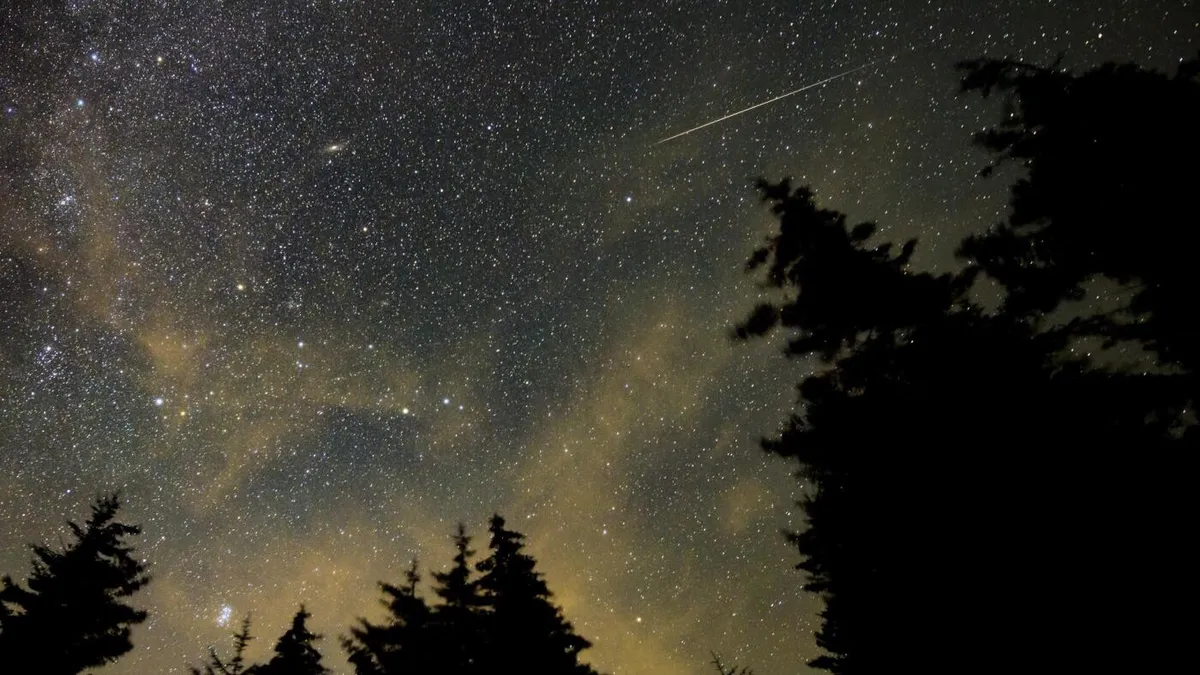
Each summer, a beloved ritual for many stargazers is to look up at the night sky, eagerly anticipating the sight of meteors, often referred to as shooting stars, streaking across the heavens. While the well-known Perseid meteor shower typically garners the most attention, this year, there are two lesser-known meteor showers that promise an exciting viewing opportunity on the night of July 29 into July 30. These showers, the Southern Delta Aquariids and the Alpha Capricornids, are expected to peak during this time, making them a compelling alternative to the Perseids.
This year, the bright moon is likely to overshadow the more significant bursts of activity from the Perseids, which peak on August 12. According to Nick Moskovitz, a planetary astronomer at the Lowell Observatory in Arizona, "the glare of the moon is really a killer," which diminishes the visibility of many meteors. On the contrary, the moon will be only about 25% full during the Southern Delta Aquariids and Alpha Capricornids, providing a much better backdrop for stargazing.
These two meteor showers combined might produce approximately 20 to 30 meteors per hour, according to Moskovitz. Meteor showers occur when the Earth traverses debris left behind by comets or asteroids orbiting the sun. When tiny fragments, some as small as dust and grains of sand, enter our atmosphere, they create dazzling flashes of light, giving the appearance of shooting stars.
For optimal viewing, the best time to observe these spectacular events is in the early hours of the morning, specifically after midnight and before dawn. Moskovitz advises stargazers to seek out dark skies, free from artificial light, and to minimize distractions by turning off cellphones and allowing their eyes to adjust to the dark—a process that can take anywhere from 15 to 30 minutes.
To catch the Southern Delta Aquariids, it's recommended to face the southern part of the sky. Although the Alpha Capricornids produce fewer meteors, when they do appear, they are often slow-moving fireballs that can be a highlight of any stargazing session. If cloudy weather threatens your viewing plans on July 29, there’s good news: meteor showers are visible not just on their peaks but also in the days leading up to and following the event.
This time of year is rich with meteor shower activity, making it a prime season for astronomy enthusiasts. Hunter Miller, an astronomy educator at the Adler Planetarium in Chicago, emphasizes the importance of finding dark skies for the best viewing experience. While the Perseids might be challenging this year due to moonlight, Miller believes they are still worth watching, as they are renowned for producing not only a high volume of meteors but also some exceptionally bright ones.
Looking forward, excitement builds for next year’s Perseid meteor shower, which is forecasted to be particularly spectacular. Moskovitz notes that the scientific community continuously monitors meteor shower predictions, especially as space industries seek to protect their assets from potential debris. In 2026, an outburst of meteors is anticipated, coinciding with a dark moon phase, making it an ideal year for stargazers.
In summary, while this summer presents unique opportunities to witness meteor showers like the Southern Delta Aquariids and Alpha Capricornids, interest in the Perseids remains strong despite lunar challenges. Prepare your stargazing gear, find a dark spot, and enjoy the celestial wonders that await!